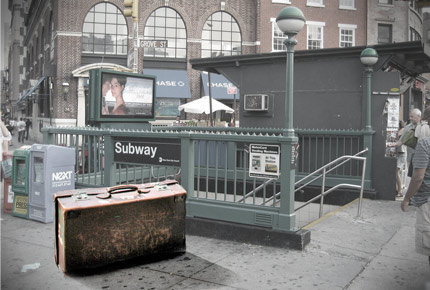Manhattan Assembly District 44: Longtime Incumbent Faces a Party Activist
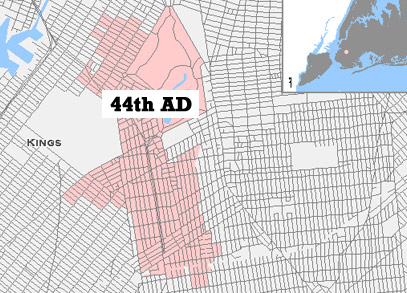
Longtime incumbent, Assemblymember James Brennan, faces Yvette Velazquez Bennett next week.
Brennan, who recently withdrew from the race for city comptroller in 2009, is the former chairman of the Committee on Mental Health, Mental Retardation and Developmental Disabilities and now heads the Assembly's cities committee. He authored major budget reform in the early 1990s and considers himself a conservationist and budget expert.
Bennett is a former City Council candidate and also ran for an assembly seat in 2006. A longtime activist in the Republican Party, she has been endorsed by Minority Leader Assemblyman James Tedisco, and she says she would like to bring a moral compass to the Brooklyn Republican party.
Brennan raised no contributions in the period covered by the 32 Day Pre-General report, but at the end of September, he had more than $40,000 on hand for his re-election bid. Bennett raised $300 in that filing period, and 32 days before the election had $983 on hand.
The district includes Park Slope, Flatbush, Kensington, Midwood and Windsor Terrace.
Â
Brooklyn Assembly District 43: Trying for a Full Term in Crown Heights
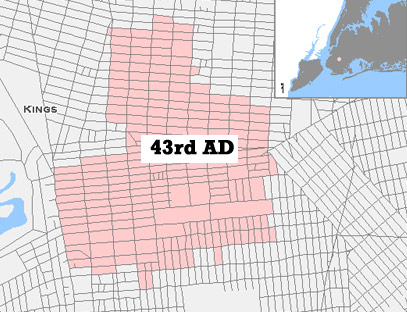
Democratic Assemblymember Karim Camara faces Republican Challenger Stuart Balberg in this Crown Heights district. Camara will be defending his seat for the first time since he was elected in a special election in 2005 to replace former Assemblymember and Democratic Party leader Clarence Norman, who had to resigned after being convicted on corruption charges.
Camara, a reverend, is former director of institutional advancement for the Cush Campus Schools, an elementary and middle school in Crown Heights. He has supported legislative term limits for Albany. In April 2007, Camara was arrested for drunken driving.
Balberg serves on Community Board 9.
As of July, Camara had had raised $23,310 for his re-election bid and had a balance of $11,192. Balberg did not report any contributions.
Â
Brooklyn Senate District 17: A Second Round in Northern Brooklyn
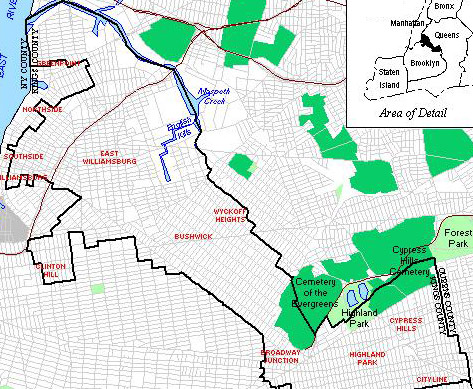
Northern Brooklyn will see a rematch between three-term incumbent State Sen. Martin Malave Dilan and Republican challenger Victor Guarino. The two faced off in 2006, and Malave-Dilan won overwhelmingly by a vote of 25,388 to 2,365.
Malave-Dilan served for a decade on the New York City Council before joining the State Senate in 2002. He identifies youth, senior and education issues as his key concerns. According to a questionnaire filled out by Guarino in the 2006 race, his main issues are tax relief for the middle class, the district's quality of life and managed health care.
According to the 32-Day Pre General filing, Malave-Dilan took in $2,000 in contributions for the reporting period and had a campaign balance of $24,637. Figures for Guarino were not available.
The 17th District includes parts of Bushwick, Williamsburg, Greenpoint, Cypress Hills, City-Line, East New York, Bedford-Stuyvesant and Brownsville
Â
Bronx Senate District 36: Rematch in the Bronx
A former member of the Mount Vernon City Council, Ruth Thompson has represented this district, which includes parts of Westchester as well as the Bronx since 2000.
On Election Day, she faces Curtis Brooks, who tried in vain to unseat her in 2006.
Thompson has said cutting spending and trying to make government operate more efficiently would be top priorities in Albany next year, although she also hopes to try to prevent cuts n education. Over the years she has worked for and with a number of organizations that promote the interest of minority business owners.
Brooks, a 68-year-old housing developer who lives in the Bronx, , has mounted seven unsuccessful campaigns for elected office, including Congressional and New York City Council, according to the Journal News. He has been in little evidence this year, not submitting answers to various candidate questionnaires. In 2006, when he also ran against Thompson he said his top priorities would be "political reform, educational reform, immigration reform."
Thompson raised $28,670, according to her 32Day Pre-General campaign finance report, and spent all but about$1,000 of it. Records for Brooks were not available.
These results are based on the unofficial vote tally as reported by the wire services and, as much as possible, directly from the New York City Board of Elections. The official count from the Board of Elections can take weeks to complete and will be p
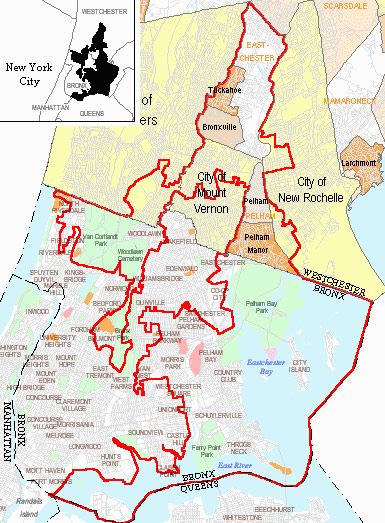
Jeffrey Klein is finishing his second term representing this district that includes part of the Bronx and Westchester. Klein, who was then a member of the State Assembly, won the office in a hotly contested race in 2004 after the longtime incumbent, Guy Velella pled guilty to taking bribes.
In Klein's bid for a third term, he faces Daniel Fasolino, a retired police officer who has also been a real estate broker and homebuilder. In an interview with the Journal News, Klein said his key priorities included property tax relief and cutting spending to reflect the state's straitened economic circumstances. Fasolino cited his key concern as "the tax situation."
According to his 32-Day Pre General filing, Klein raised more than $48,000 in the reporting period and had almost $756,000 on hand. Figures for Fasolino were not available.
Â
Bronx Senate District 33: Espada's New Clout
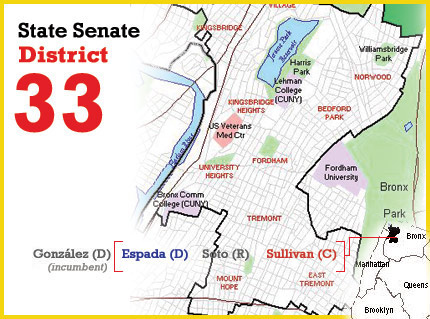
On primary day, Pedro Espada Jr. accomplished something incredibly unusual in New York politics: He defeated an incumbent member of the state legislature. The fact that that incumbent, Ephrain Gonzalez faces criminal charges probably helped Espada's cause.
He may also have benefited from a schism in the Bronx Democratic Party. The organization, headed by Assemblymember Jose Rivera, backed Gonzalez, who was just one of a number of the organization's candidates who lost Democratic primaries on Sept. 9.
On Election Day, Espada's sole opponent is the Conservative Party's William Sullivan, who has seemingly kept a very low profile .Republican Richard Soto, another almost invisible candidate, is no longer on the ballot.
Espada's return to the State Senate -- he previously represented another Bronx district in that body -- makes some Democrats nervous. Although he is running as a Democrat and previously held office as a Democrat, Espada has flirted with the Republican Party. This worries Democrats, who hope to capture the Senate this year. If the elections leave the parties deadlocked, they fear Espada will once again turn to the GOP, letting the Republicans maintain their control.
"There's something ridiculous about a Legislature in which a pol as slippery as Pedro Espada Jr. could be the ultimate power broker," Bill Hammond wrote in the Daily News, reminding readers of Espada's past legal and political shenanigans. But, Hammond continued, "His whim might well determine which party controls the State Senate - and the future direction of state government."
Discuss this Article
Other Related Articles:
Will Albany Allow the Rent Laws to Expire? Does it Matter? (2011-06-14)
After Heated Closed-Door Debate, Senate Expels Monserrate (2010-02-10)
The Maria Baez Revolt (2009-09-10)
Dividing Albany's Pork Pie (2009-07-27)
A Fractured Senate Takes on Mayoral Control of Schools (2009-07-14)
Amid Fireworks, the Senate Stalemate Continues (2009-07-02)
As Time Runs Out, Paterson Tries to End the Deadlock (2009-06-22)
Senate Turmoil Puts Everything in Doubt (2009-06-15)
City Council Approves Term Limits Extension
div class="photo">
In its most divisive vote in recent memory, the City Council approved an extension of term limits clearing the way for two-thirds of its members, four borough presidents, the comptroller, public advocate and Mayor Michael Bloomberg to run for a third term.
Thursday afternoon’s vote reverses two referenda approved in the 1990s, but, supporters argue, is a necessary response to the fiscal crisis gripping the city and the nation. The decision also drastically changes the circumstances of next year's city elections, which would have seen a large turnover in City Hall.
(For a discussion of what the vote and the extension of term limits could mean for City Council, see Gotham Gazette's For Council, Another Term Holds Risks and Rewards.)
The bill ( Intro 845) was approved by a vote of 29 to 22.
Some of the bill's fiercest opponents, including council members Letitia James and Bill de Blasio, have pledged to fight the term limits extension in court. A suit, which names the entire City Council and the mayor as defendants, was filed in Manhattan federal court less than two hours after the council adjourned its meeting.
For three weeks, City Hall has been consumed by the term-limits debate -- a discussion that has centered more on democratic principles and process than whether or not city officials should be allowed to serve eight or 12 years.
Before the council voted Thursday afternoon, Council Speaker Christine Quinn made an approximately five-minute appeal for her members to support the mayor's bill -- introduced only two weeks ago. "My colleagues," she said, "I come to the floor on this day with mixed emotions, because this is a difficult vote, but this is a difficult vote in difficult times." She continued: "In times like these, voters should have the choice."
Prior to the approval of the mayor’s proposal, the council defeated an amendment that would have required the voters to approve any term limits extension before the legislation could take effect. It was defeated by a vote of 28 to 22 with one abstention. Two members who spearheaded and voted for the amendment -– David Yassky and Alan Gerson -– reversed their position and voted for the mayor’s bill after.
For a full breakdown of who voted how, click here.
Rush to Judgement?
Three weeks ago, Bloomberg, portraying himself as the person best able to lead the city in tough economic times, said voters needed to have the opportunity to return him to office for another term -- regardless of term limts. He alleged, though many disagreed, that there was not enough time to put the issue to the voters before the 2009 campaign. He wanted the City Council to extend the limit.
Following his announcement, opponents of an extension criticized the council and the mayor for speeding through the legislation and not taking the time to hold hearings in every borough. Last week, the council held two days -- encompassing 20 hours -- of hearings at City Hall.
Some opponents also attacked an agreement between the mayor and Ronald Lauder, the billionaire who spearheaded the campaign to establish term limits in the city. Under the deal, Lauder would support an extension of term limits for now and the mayor would establish a charter review commission in 2010, after the mayoral election, to look into term limits -- and name Lauder to it. That commission could potentially send the issue back to the voters then.
The Council's Debate
Those who voted in favor of the mayor's bill hinged their support for a term limits extension enacted through legislation -- without voter approval -- on the economic turbulence shaking Wall Street and on the concept that term limits are "anti-democratic." They argued the city needs stability, and allowing Bloomberg and others a chance at a third term merely provides constituents with another choice. An extension, they say, does not guarantee reelection.
"Today, the majority of the City Council decided to give the people of New York a fuller choice in the November 2009 election," read a statement from Bloomberg after the council vote. "I believe that was the right choice, and I want to thank Speaker Quinn for her leadership. Those of us who work on both sides of City Hall must now move forward with the important decisions that face us, particularly finding ways to soften the fallout from the economic downturn and balancing our budget as revenues decline."
Opponents, though, said acting against the will of the voters from the council floor is a run around democracy. Pointing to the chamber's ceiling where quotes from Abraham Lincoln’s Gettysburg Address are etched in an elaborate fresco, Councilmember Vincent Ignizio said, "Bring the people in, open up the doors to government and truly be the reformers that is this body. ... If you make that compelling case to your constituents they will reward you. Do not reward yourselves."
Thursday's vote was not without passion, politics and posturing. The chamber was packed with constituents, some of whom stood for two hours holding signs above their heads with pleas for or against an extension. Members recited quotes from presidents, newspaper editorials and the mayor himself. They gave two-minute monologues, the majority of which were against the mayor's proposal.
"A voter referendum -- approximately $15 million," said Councilmember Rosie Mendez. "A legislative vote -- several hours at a New York City Council hearing. Democracy," she said, then paused. "Priceless. Do not put a price on democracy."
Along with passion, came humor.
“Unfortunately here,” quipped Councilmember Gale Brewer during the council’s roll call at the start of the meeting. The chamber erupted with laughter.
Others spewed disappointment and anger. At the meeting's close, jeers from the chamber's balcony called the speaker a sellout, saying the council should be ashamed of itself. Both members of the public and the legislative body said this would not be the end of the term-limits debate.
"The mayor is the big loser," said Councilmember Charles Barron, following the vote. "He lost democracy. He lost the people."
Three Weeks in October
Gotham Gazette's coverage of the term limits debate:
For Council, Another Term Holds Risks and Rewards: Would voting to extend term limits enhance the City Council's power -- or reinforce its image as a band of marionettes?
Make That Three: Bloomberg's Reelection Bid: If Bloomberg manages to win re-election, what could he do about the economy anyway?
Comparing Proposals on Term Limits: A guide to the competing measures proposed in City Council.
Term Limits as a Voting Rights Issue: Where civil rights and civil liberties organizations stand.
Third Term's The Charm: The debate takes shape. How the mayor and the City Council could change the term limits law.
Musical Chairs: Shuffling Seats in City Government: The situation before the mayor and City Council changed their minds.
For commentary and breaking news on term limits, see our blog, The Wonkster. For links to reporting on the issue from other New York press, see City Hall Links in the News.
Third Term's The Charm
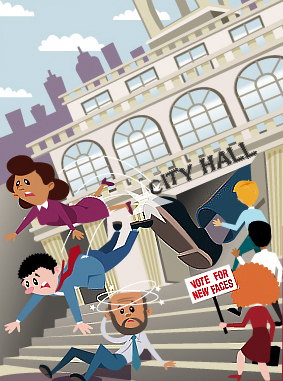
Illustration (c) Gotham Gazette
Councilmember Oliver Koppell, a career politician who has gone from state attorney general to a member of the Bronx delegation in City Hall, needs a new job.
Term limited out of his seat next year, the councilmember told Gotham Gazette in March he would not seek higher office in 2009. His plan was to leave public life behind after 38 years.
Well, maybe his plans have changed.
Just after Labor Day, Koppell said he would ask the council staff to draft a bill that could allow him, 34 other council members, four borough presidents and the mayor -- all of whom face being term limited out of office at the end of 2009 -- another four years in their posts. It would extend the city's term limit from two terms to three, from 8 years to 12. Councilmember David Weprin, followed by Tony Avella, plans to introduce competing legislation requiring a referendum on any extension of term limits.
Though Koppell says he has not decided whether he would seek a third term if the legislation passes, the councilmember argues that allowing his colleagues the opportunity to win one more term would boost the power of the people.
"The people should have a right to vote (for or against incumbent council members)," said Koppell. "There are outstanding members of the council who would run."
That is, if they can get the necessary bill or referendum passed first.
Since Mayor Michael Bloomberg first floated the possibility of extending term limits, pundits, pollsters and politicians have mulled how city officials would go about doing it.
Would – or, more importantly, could -- the City Council pass legislation? Would it send the question to voters before 2009? Would any movement be able to withstand the all but certain lawsuit? And when would the council need to act?
None of these questions have sure answers.
Capping Terms
Twice – in 1993 and 1996 -- voters in New York City approved a two-term cap on how long members of the City Council, borough presidents, the public advocate, comptroller and mayor could serve. They hoped that the limits would infuse City Hall with new blood. Many new politicians entering office in 2002 expressed support for the measure.
"There's no company that I know of that doesn't benefit when they have changes in management once in a while," Bloomberg told the New York Post in 2005 after winning his second – maybe his final – term.
The majority of the city's veteran politicians had to leave office in 2001, and next year, City Hall will face a similar change: two thirds of the 51 members of the City Council are in their second term.
When the issue of extending term limits came up as council members vied to become speaker in 2005 (the previous speaker, Gifford Miller, had to leave because of term limits), current Speaker Christine Quinn promised to take up the issue "immediately" if elected speaker. Despite that, the subject basically has been off the table since then.
In the meantime, many council members have already declared candidacies for other office – from mayor to borough president to the state legislature – and have started fundraising campaigns to match their ambitions.
Then a few weeks ago, the landscape shifted.
Bloomberg -- in what could be an attempt to keep City Hall observers on their toes, a grab for power or publicity, or an effort to stave off lame-duck status -- met with the publishers of three major newspapers, seeking their opinion on extending term limits. He then flirted with the idea at press conferences, punting the term-limit question back to the council, saying he would have to think "long and hard" if a bill upping the term-limit cap to three crossed his desk.
As the term-limit debate revs up again – commercials are hitting television screens urging the City Council to abandon the issue – some observers are not only wondering if, but how it could be done.
Term Limit Options: A Referendum

Image from New Yorkers for Terms Limits ad
Regardless of what one thinks of term limits, New York has them because voters wanted them. More than a million New Yorkers voted for term limits in two elections, according to New Yorkers for Term Limits – a lobbying group that opposes an extension. That group is funded by billionaire cosmetics heir Ronald S. Lauder, who funded the original campaign for term limits.
The voters could have another opportunity to weigh in on the issue.
Under state law, a legislature, such as the City Council, can put a question on the ballot if it collects 30,000 signatures. Ordinary citizens, though, need to collect 45,000 signatures to get a referendum on the ballot.
Good government groups in the city, including Citizens Union, whose sister organization publishes Gotham Gazette, and the New York Public Interest Research Group, support a referendum, allowing the voters to decide, if the city chooses to look into extending term limits.
A Referendum, But When?
It is too late to get this on the ballot for November. So, if term limits were to be extended in time to save the jobs of Bloomberg, Quinn, Koppell and so on, a special election would have to be held. The council has not called a special election – that power is usually reserved for the mayor – and it is unclear whether the council can call one on its own.
If a legislature approves a bill changing a public office's power, state law requires a referendum be held. Some interpretations of the law, according to a memo from Citizens Union, say it may be possible for the council to call a special election on term limits for this reason. Whether term limits falls into this "power" category is unclear. Given the historically low turnout for special elections, some fear an election could be timed to place incumbents at an advantage.
Bloomberg could also place a term limits question on the ballot via the City Charter Revision Commission. In his State of the City address earlier this year, the mayor said he would set up a committee to examine the City Charter. The scope of that committee has not yet been announced. If it eventually gets off of the ground, it could look at term limits and then put a referendum to the voters in the 2009 general election.
The mayor's office declined to comment on whether the commission would be looking into this issue.
To ensure the council would allow voters to determine the fate of term limits, Weprin asked the council's legal arm -- one day after Koppell made his legislative request -- to draft legislation that would explicitly require a referendum for term limit revisions.
At a press conference on Sunday, Weprin and council members Bill de Blasio and Eric Gioia stood on the City Hall steps in the sweltering heat, vowing to vote against any bill that extends term limits without a referendum.The members called Koppell's bill "corrosive" and said it undermined the public interest.
In the Chamber
Some interpretations of the law suggest that the council does have the authority to expand term limits without putting the question to voters – as in Koppell's proposal. If vetoed by the mayor, the council could override it with a three-fourths majority.
This scenario, by far, has sparked the most criticism.
"I don't know why these people think they have the ability or the authority to make a decision that the voters already said they shouldn't do," said Hank Sheinkopf, a consultant who works on many local campaigns.
The council's power to extend term limits legislatively hinges on a 2003 state appellate court opinion. The council had redefined term limits to mean two consecutive full four-year terms, as opposed to just two terms. This meant that some members, elected mid-term in a special election or during redistricting years, could actually serve 10 years, say, instead of the usual eight. Some potential City Council candidates challenged the 2002 law. The state courts, though, ruled in the council's favor.
Several council members said their legal staff interprets the court's finding as a green light for additional term-limit changes. Other advocates say the latest proposal is different, because it is not clearing up ambiguity in the law, but fundamentally changing it. For that reason, it could be susceptible to a legal challenge.
"I ultimately believes this goes to court," said Councilmember Vincent Ignizio, who is not term limited and says any bill the council considers needs to be for the next class of legislators.
The question is whether allowing additional terms amounts to an extension of the council's power, thus triggering a referendum, or whether it is revising the current law.
Koppell, citing his experience as a former state attorney general, insists that the proposal could survive a legal challenge.
Others, not surprisingly, disagree.
"Do they have the power? The power is from the people and the people have already voted on it," said Kenneth Moltner, a spokesman for New Yorkers For Term Limits. "There is absolutely nothing the City Council should be doing."
Council members say a majority of members would approve a bill to extend term limits. If the mayor vetoed it, most members believe the council would not have enough votes to override that veto.
The city's Law Department declined to comment on the legality of Koppell's approach.
A Constituent Backlash?
So, let's say the council can revise the term-limit law legislatively and give members the opportunity to snag four more years. But, should it?
Many advocates and consultants say no, arguing the council would be acting primarily in its own self interest (Even Koppell said half of the support for the bill is motivated by self interest – the other half being a policy-based decision).
"This is not a good way to be having a debate," said David Birdsell, the dean of the School of Public Affairs at Baruch College. "It should not be a debate about individuals. It should be about structure of choice."
For that reason, some members argue any change should be done prospectively for the next class of council members. The council, as a legislative body, could get all the benefits of a longer term (including, the enhanced ability to stand up to the all-powerful executive branch, experience to get larger policy initiatives passed, less reliance on staff members, etc.) without the political ramifications.
If they made any change take effect immediately -- benefiting themselves -- political consultants say the council might see a backlash from the electorate, who could vote them out of office anyway.
"There is a danger that the voters may revolt and might go in and elect (challengers)," said Shienkopf.
On the other hand, the incumbents' popularity, particularly the mayor's, is precisely what's fueling the debate. More than 70 percent of voters approve of Bloomberg, according to a poll this summer by Quinnipiac University, but 56 percent don't want to see a change in term limit law.
That said, some New Yorkers would like to see him stick around anyway. "Michael Bloomberg runs a quality mayoralty. New York City could do worse than to have him around for another four years," read one editorial in the New York Post this June."And it probably will do worse - thanks (or no thanks) to term limits."
Campaign Confusion
To add to the confusion over legislative power, at least 24 term-limited officeholders are fundraising for another office. If some of them decided to run for a third term instead, they may have to return donations.
A candidate for City Council can accept contributions of $2,750 each, while a candidate for a citywide office can accept $4,950.
In addition, spending limits vary by office. Council candidates, if they participate in the public financing program, can spend $161,000 on a primary and the same amount on a general election. A mayoral candidate can spend about $6.2 million, while an aspirant for borough president can spend $1.4 million.
De Blasio, who is running for Brooklyn borough president, said, "We cannot change the game in the 11th hour." He would not say on Sunday whether he would consider running for a third term if the voters approved an extension.
Campaign Finance Board Press Secretary Eric Friedman said the board is already considering how to react if incumbents change their '09 plans. Office space in Manhattan, would not help a candidate if he or she decided to skip the citywide races and instead run for a third term in a council seat in Queens. Should spending in Manhattan count in a Queens race?
Already, candidates who could potentially run for a third term if term limits were extended, like council members Melinda Katz and Weprin, have far exceeded the spending limit for council races.
"You think of a monopoly board and someone walks by and flips it upside down," said Friedman. "You have to put the pieces back together."
A Extension Deadline
Because the city could hold a special election to determine term limits and the City Council could pass legislation anytime, term limits are very much in limbo.
Friedman said candidates have until June 2009 to decide whether they would enter the campaign finance program. Realistically, candidates need to know the term limits situation if they are to direct fundraising and outreach far sooner than that date.
The speaker's office will have until November to comply with both Koppell's and Weprin's legislative requests. Before that though, we will need to get direction from Quinn on whether either bill will get a hearing. In almost all cases, legislation does not move unless the speaker wants it to.
But insiders say it's really Bloomberg who will determine how, if and when any referendum or legislation moves forward. For now, both Quinn and Bloomberg aren't answering any questions.
"I'm very confident, if (the mayor) decides to move a piece of legislation on term limits, or anything else, he will call me, we will talk," said Quinn at a recent press conference. "If that happens, then there will be more to say. But there is nothing to say right now on term limits."
A New New Yorker's Reference Guide
Since 2000, the city has welcomed 200,000 new New Yorkers to its ever-expanding population. Perhaps you are one of them?
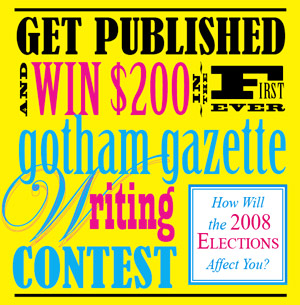
ALSO: Enter the first ever Gotham Gazette writing contest and win $200. Winning entries have the opportunity to be published on Gotham Gazette. Please click here for details.
AND: Watch the Gotham Gazette audio slideshow guide to city government.
PLUS: Finding Your Way Around New York's News
If you've acclimated to bustling streets, crowded subway cars and exorbitant rents, the time has come to turn your attention to New York City civics. Fear not, though: Gotham Gazette is here to provide you with a plethora of knowledge on New York City policies, from the budget process to sustainability to demographics.
In anticipation of the thousands of new New Yorkers making their way to a new home here this fall, we have compiled a New York City user's guide -- overflowing with some of our best stories that are sure to strengthen your civic adeptness.
Check out the links below. And come back every week to stay up to date on New York's latest policy and political news.

Arts
One Person's Vandalism Is Another One's Art
How graffiti can be cherished and reviled by the city.
How To Make It In NYC As An Artist
Find out about an array of sacrifices you may have to make to make it as an urban artist.

City Government
Unanswered Questions: City Council's Phantom Funds
We know millions of dollars were found stashed in the city budget to be appropriated at a later date. But what other questions remain over the council's ethically questionable practice.
Musical Chairs: Shuffling Seats in City Government
With term limits on the horizon for two-thirds of the City Council, many are looking for jobs elsewhere.
A One in Five Shot: Passing City Council Bills
Find out who is the most successful at getting legislation passed, and why.

Civil Rights
The State of Civil Liberties
In the shadow of recent controversies over Central Park's Great Lawn, civil rights columnist Andy Humm looks at where we have come from and where we are heading.
In the last decade, marijuana arrests have skyrocketed. But do marijuana users threaten public safety?
Reversing the Tide Against Protest
Council members have proposed legislation revising guidelines for parade and demonstration permits after several protests sparked lawsuits against the police department and its crowd control practices.

Community Development
As the Economy Worsens: Helping People Find Jobs
The Bloomberg administration is helping hundreds find jobs, but some say it cannot tackle entrenched economic and social barriers.

Crime
The High Price of Counterfeit Goods
A $23 billion industry, counterfeit items in New York City are not hard to find.
Who's Stopped? Who's Frisked?
After one study showed the Police Department stopped non-whites far more often, we talk to the lead author.

Demographics
No Quick Riches for New York's Twenty-Somethings
What salaries recent college graduates should expect, with women leading the way.
Women of New York City
Female New Yorkers are more likely to earn more money and be single than women elsewhere in the country.

Economy and Finance
Paying the Price for Living in New York
City living is expensive, but in New York City, with rate increases and inflation, it can be grueling.
The Budget Maze
Take a spin through the city's labyrinthine budget process and see if you can get a member item, program or tax cut passed.

Education
A Battle Brews Over Who Controls the Schools
As mayoral control is about to sunset, officials and advocates are already drawing lines on what to do with the city's schools.
The School Admissions Scramble
Getting into a New York City high school can seem more challenging than landing an Ivy League admission four years later.

Environment
A Smoother Ride for Cycling in the City
How is the city getting New Yorkers out of their cars and onto their bikes.
Measuring the Garbage Glut
Design your own solid waste management plan for New York City and see how it stacks up to the city's proposal.

Health
Creating Healthy Bodegas
The city is trying to clean out candy and sweets and bring in reduced fat milk and fruits at your corner store.
NYC vs. Fast Food
The city has a contentious relationship with its fast food industry, from trans fats to rat infestations.
Problem s with Pigeons
Pests or a threat to public health? One councilmember is looking to control the pigeon population permanently.

Housing
Preserving Public Housing that Works
A professor argues how the city can save its public housing authority.

Immigrants
What Three Million Immigrants Do
A quarter of economic output in New York State can be attributed to immigrant communities.
Good Government Speaks Many Languages
Language barriers threaten services for immigrant communities.

Land Use
Is the Long-term Sustainability Plan Sustainable?
PlaNYC 2030 may cover an array of environmental topics, but it leaves out one thing: public participation.
College Boom
Most universities and colleges in New York City are looking to expand. Here is a look at several of the projects, and the opposition that has followed.
Crumbling Systems
The fate of our aging infrastructure is questioned under the weight of millions of users.

Parks
Tracking Crime in the Parks
After decades of danger, our city parks are a lot safer. We take a look at the crime that still occurs there.

Tech
Counting Down to the Great Television Turnover
The switch to digital television may see some static.
Expanding Wi-Fi Beyond Manhattan
How can the city can get wireless access beyond Manhattan and into the outer boroughs?

Voting
In New York, Those in Power, Stay in Power
Incumbency, in New York State, means serious job security.

Waterfront
A City by the Sea -- or Under It?
In a city surrounded by water, how can we avoid a catastrophic coastal flood? And, are the city's actions enough?
On the Beaches
At the city's public beaches, water quality and litter do not keep the droves away.

Miscellaneous
Summer Reading: Best Books About New York
What New Yorkers are reading and what others are writing about the Big Apple.
And Now: The Paterson Administration
How will the Paterson administration differ from the steamroller?
Â
Invasion of New York

Gotham Gazette image by Ya-Hsuan Huang
It's not your typical type of tourism.
But plants and insects end up paying unintended visits to New York City just like any other traveler.
There's one difference, though: These pesky species end up staying.
Grounding their roots, literally, in our soil, invasive species come from far and wide, via barge or souvenir-stuffed suitcases, in what horticulturists and biologists across the city call a serious threat to our habitat. Deceiving to the common eye, these foreign born pests and plants raise significant challenges for the city's Department of Parks and Recreation: monitoring, controlling and even eradicating top the list.
Though the city welcomes visitors from far and ride (foreign tourism, according to the Bloomberg administration, is what is fueling our economy right now), advocates and the parks department have another message for the relentless Asian Longhorned Beetle or the slimy, practically amphibious Snakehead Fish.
Keep Out!
A City of Immigrants Sees Immigrating Species
The city is no stranger to immigration -- we are, after all, a Mecca of diversity and transcontinental culture. But our parks may not be as welcoming as Ellis Island.
For centuries, New York has been inundated by foreign-born plants and wildlife. Even creatures we now consider common -- like our subway or sewer rat -- are invasive species. We may have adapted to some of them -- whether we wanted to or not -- but other more contemporary wildlife pose a serious threat to the sanctity of our natural flora and fauna, say city scientists.
To them, fighting or controlling invasive species isn't a choice, but a necessity.
"The issue of invasive species is second only to habitat loss as a threat to plants and animals worldwide," said Steven Clements, senior scientist at the Brooklyn Botanic Garden. "It's almost as big a threat as deforestations."
To the untrained eye or the casual park-goer, that may seem hard to believe.
But the effects of invasive species are expansive, from killing off native plant and wildlife to threatening our infrastructure and waterways.
 Click here for more on the Common Reed
Click here for more on the Common ReedTake the purple loosestrife. First introduced in New York City in the 1800s, the tall, weed like plant has attractive flowers that can coat wetlands in a sea of violet. That purple stalk, however, kills off all adjacent plant life. Its ability to grow fast and tall makes the survival of neighboring species practically impossible.
And when native flora fades, the entire habitat and food chain can be thrown into flux and uncertainty. Birds may no longer be able to feed on the area's bugs. Insects are eradicated that had relied on the native plant life. And the cycle goes on.
"Different species have different roles in the functioning of the habitat," said Susan Elbin, the director of conservation at the New York City Audubon. "So when you cut down the number of players you may be eliminating an important function that happened in that system that you don’t even know about."
 Click here for more on Dutch Elm
Click here for more on Dutch ElmThere is also Dutch Elm, which attacks some of our forest population in Central Park, or the phragmites -- a so-called gluttonous reed found in our marshes known to consume and kick out other wildlife. These and more (Check out our biology cards linked under the images) can unsettle any wild habitat.
A Public Nuisance
Other animals may not throw off the balance, per say, in our widely dispersed, natural habitats. Instead, they threaten our man-made infrastructure --- from power lines to our sewer systems.
The zebra mussel is half-buried at the bottom of the Hudson River. Though it also threatens native-born mussel species, the zebra mussel, originally from Russia, takes up residence in the city's water treatment and sewer pipes, clogging them up and contaminating the system. One study from the federal General Accountability Office said the zebra mussel accounts for $137 billion a year in economic losses and other costs annually nationwide.
 Click here for more on the Quaker Parrot
Click here for more on the Quaker ParrotLess slimy, but of potentially equal threat to our infrastructure, are the parrots of Brooklyn, which came fluttering in through Kennedy airport. The birds, known as Quaker parrots or monk parakeets, are thought to have originated in Argentina and escaped from a cargo container at the airport in the 1960s or '70s and then intermarried with escapees from local pet shops and homes. While groups settled throughput the metro area, most have taken up residence in Brooklyn. Since they are from southern Argentina, which has a temperate climate, they do well here.
"They are successful Brooklynites, in that they are adaptable, eat a wide variety of foods and like to talk," Eleanor Miele, a professor at Brooklyn College, where many parrots hang out, told the Washington Post.
The birds, though, have attracted the ire of Con Edison and other electric companies for building huge nest for their colonies on light poles. In Connecticut, a power company, United Illuminated, is seeking permission to kill the birds, while in Florida researchers have proposed mixing contraceptives in with bird seed to limit the parrot population.
While there were efforts to wipe out the New York colonies, Con Ed in general has taken a more moderate stand than some other utilities. It, for example, tried to dismantle the huge nests -- only to see the parrots build again -- and has created alternative platforms. More recently, New York's parrots have faced another threat: Poachers have captured many of the birds to sell them. While this may have decreased their numbers, many remain.
A Long Trip
As species cause damage and irritate our utility companies as well as our wildlife, one may wonder how they got here in the first place?
 Click here for more on the Asian Longhorn Beetle
Click here for more on the Asian Longhorn BeetleMost commonly, said advocates, would be through international shipping and travel. Most of these dangerous species, like the longhorned beetle or the West Nile Virus, have hitchhiked here that way. West Nile, originally found here in 1999 and has since resulted in 159 cases and 23 deaths, is thought to have come here via a passenger through John F Kennedy International Airport, perhaps in a traveling mosquito or in a person who was already infected. It had been confirmed before 1999 in Asia, Africa and Europe.
The Longhorned Beetle too made its way across the Pacific via wood packing material from China (See related story).
Because these species come in through New York's ports, much of the regulation to control and monitor cargo is out of the city and the state's jurisdiction. As international trade increases, officials do not see invasive species slowing down.
"Henry Hudson I'm sure brought his share of invasive species," said Steve Sanford, director of the office of invasive species coordination at the state Department of Environmental Conservation. "The rate of invasion is so fast because of globalization," he added. Since 2004, said Sanford, about 15 new species have invaded New York.
While much of port regulation is out of state and city hands, New York, with several other states, recently won a court decision requiring the Environmental Protection Agency define regulations for ballast water -- or the water released from the underbelly of the ship once it reaches its destination -- by the end of September. That water is known to harbor foreign species, like the zebra mussel.
Other legislation outlining how much that water would have to be treated before release is pending in Washington.
Beyond controlling our ports and international travel hubs, it comes down to monitoring and controlling on the ground level, said city and state officials.
Crowding Out
There is a reason why they call them invasive. Like modern-day warfare, these species invade, lay claim to the habitat, take on natural wildlife and push them out.
Sometimes it takes innovative responses -- such as the National Park Service's policy of bringing in goats to eat away invasive species on Staten Island.
To take back control elsewhere, it often takes manpower -- city parks department workers making their way through the city's forests to weed out, excuse the pun, these foreign plants. Mike Feller, the chief naturalist for the natural resources group in the city's parks department, said they have been identifying and mapping foreign species throughout the five boroughs for decades. It wasn't until recently, however, that they received the funding that enables his team to go in and root up foreign plants to replace them with natural ones.
Years ago, he was not so optimistic. Feller recalled visiting Riverdale Park in the Bronx where the Porcelainberry, a rapidly growing vine from Asia, had taken over tree trunks 50 feet into the air, invading the canopy for acre after acre. Now, he said, it's practically gone.
"I remember looking at it and saying, 'This is hopeless,'" said Feller. But, he added, "You really can ravel things back."
PlaNYC 2030, Feller said, is one way he sees his department raising awareness and funding. The Bloomberg administration's million trees initiative, he said, is one way the city can cut down foreign flora and bring back natural plant life. Even with this infusion of attention on the city's ecosystem, Feller said much of the control over invasive species is not within the city's policy purview, but the state and in Washington.
On the state level, attention to invasive species is on the rise. After a task force investigated the prevalence of invasive species in New York State in 2004, a division of the state Department of Conservation, which Sanford heads, was formed to oversee the control of invasive species statewide. That monitoring is rolling out right now, said Sanford.
Â


